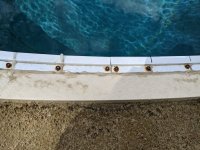Hey all,
First, thanks everyone for the help. It's great to find communities like this when you are starting a new adventure, definitely helps!
So we had a vinyl lined pool installed and we are going to try and tackle the patio ourselves. We plan to use a blue mist granite for the cantilevered edge coping
and then have a natural stone patio off that. And for good measure a water feature in one corner. I've posted some pre work images to hopefully help with any
questions. I can get additional pictures if needed.
So I have perused the forums, and I've found a lot of relevant information to lead us down the right path, but I do have some questions for my specific pool.
Starting with the coping: I'm going to get 1 1/4" thick thermal blue mist granite tiles to use as the coping. The one detail I intend to outsource is the cutting and bull nosing of
the granite pieces. I'll be making the coping templates myself with something like cardboard/poster board. My main concern for the coping is prep work for a long lasting
coping installation. My general thoughts on the prep (based on a lot of advice I've seen here) are to dig out the sand to leave enough room for 2-3" of crushed stone, and then a 4-5" deep concrete collar all around the pool. I'm planning for the granite coping pieces to overhang the collar by about an inch. Install granite coping, dig out sand where the natural stone patio is going to be, replace it with 4" of
crushed stone, maybe an inch of sand on top of that, and then the natural stone patio. Figured best if I number out my questions and see where things go from there.
1. Is the vinyl liner track that is installed appropriate for a granite coping? Originally we were going with poured concrete and changed our mind. We'll also be digging out a lot of sand unfortunately...
2. Do I need rebar in my concrete collar? I intend to add fiber mesh to the concrete mix. Overall the collar would be about 10" wide by about 4-5" deep.
3. Are my concrete collar depth sufficient?
3. Should I bring the ground wire closer in to be fully inset into the concrete collar?
4. How thick should the grout lines be between granite coping pieces? I want to be sure to get this right to get the templates right!
5. How thick should the mortar bed be for the installation of the granite coping pieces? Also important to choose the final height of the concrete height of the collar.
6. In one or two of the pictures, you'll see 4 tubes inset that are right near the pool wall. These were placed with the intention of filling them with concrete so that the
rock fountain water feature doesn't sit directly on the pool wall. I intend to keep this plan and also keep the concrete collar going all around the pool even in this area.
Does anyone see an issue with that idea to support the heavier rock foundation area?
I probably have a few other questions/points, but I feel like I'm getting a little too wordy for a starter message. Let me see where the feedback takes the thread and I'll
keep it updated as I plan, etc.
Thanks again for the help!
Ryan
First, thanks everyone for the help. It's great to find communities like this when you are starting a new adventure, definitely helps!
So we had a vinyl lined pool installed and we are going to try and tackle the patio ourselves. We plan to use a blue mist granite for the cantilevered edge coping
and then have a natural stone patio off that. And for good measure a water feature in one corner. I've posted some pre work images to hopefully help with any
questions. I can get additional pictures if needed.
So I have perused the forums, and I've found a lot of relevant information to lead us down the right path, but I do have some questions for my specific pool.
Starting with the coping: I'm going to get 1 1/4" thick thermal blue mist granite tiles to use as the coping. The one detail I intend to outsource is the cutting and bull nosing of
the granite pieces. I'll be making the coping templates myself with something like cardboard/poster board. My main concern for the coping is prep work for a long lasting
coping installation. My general thoughts on the prep (based on a lot of advice I've seen here) are to dig out the sand to leave enough room for 2-3" of crushed stone, and then a 4-5" deep concrete collar all around the pool. I'm planning for the granite coping pieces to overhang the collar by about an inch. Install granite coping, dig out sand where the natural stone patio is going to be, replace it with 4" of
crushed stone, maybe an inch of sand on top of that, and then the natural stone patio. Figured best if I number out my questions and see where things go from there.
1. Is the vinyl liner track that is installed appropriate for a granite coping? Originally we were going with poured concrete and changed our mind. We'll also be digging out a lot of sand unfortunately...
2. Do I need rebar in my concrete collar? I intend to add fiber mesh to the concrete mix. Overall the collar would be about 10" wide by about 4-5" deep.
3. Are my concrete collar depth sufficient?
3. Should I bring the ground wire closer in to be fully inset into the concrete collar?
4. How thick should the grout lines be between granite coping pieces? I want to be sure to get this right to get the templates right!
5. How thick should the mortar bed be for the installation of the granite coping pieces? Also important to choose the final height of the concrete height of the collar.
6. In one or two of the pictures, you'll see 4 tubes inset that are right near the pool wall. These were placed with the intention of filling them with concrete so that the
rock fountain water feature doesn't sit directly on the pool wall. I intend to keep this plan and also keep the concrete collar going all around the pool even in this area.
Does anyone see an issue with that idea to support the heavier rock foundation area?
I probably have a few other questions/points, but I feel like I'm getting a little too wordy for a starter message. Let me see where the feedback takes the thread and I'll
keep it updated as I plan, etc.
Thanks again for the help!
Ryan
Attachments
-
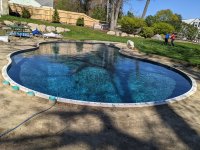 PXL_20210501_190311005.jpg716.3 KB · Views: 118
PXL_20210501_190311005.jpg716.3 KB · Views: 118 -
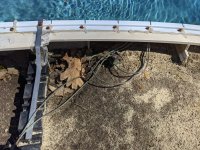 PXL_20210501_190000725.jpg730.3 KB · Views: 115
PXL_20210501_190000725.jpg730.3 KB · Views: 115 -
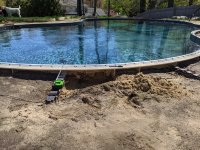 PXL_20210501_185448376.jpg770.8 KB · Views: 105
PXL_20210501_185448376.jpg770.8 KB · Views: 105 -
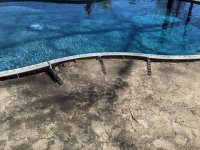 PXL_20210501_185336716.jpg785.4 KB · Views: 101
PXL_20210501_185336716.jpg785.4 KB · Views: 101 -
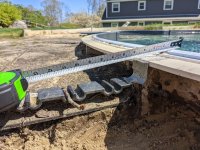 PXL_20210501_185217034.jpg571.7 KB · Views: 104
PXL_20210501_185217034.jpg571.7 KB · Views: 104 -
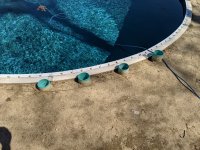 PXL_20210501_185349410.jpg725.9 KB · Views: 106
PXL_20210501_185349410.jpg725.9 KB · Views: 106 -
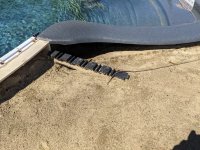 PXL_20210501_185412799.jpg760.1 KB · Views: 120
PXL_20210501_185412799.jpg760.1 KB · Views: 120


